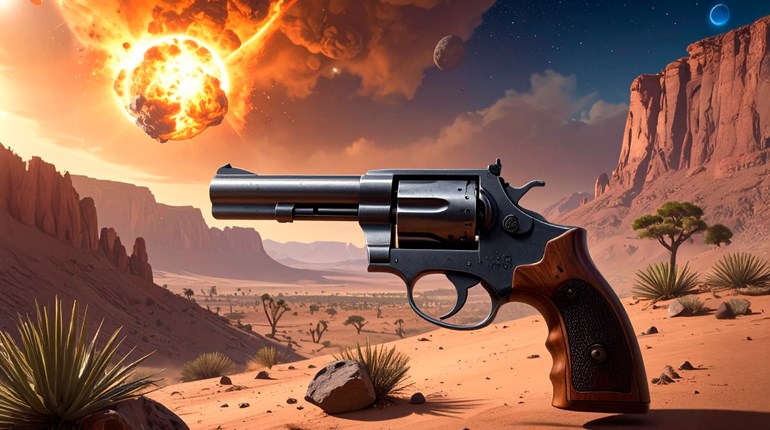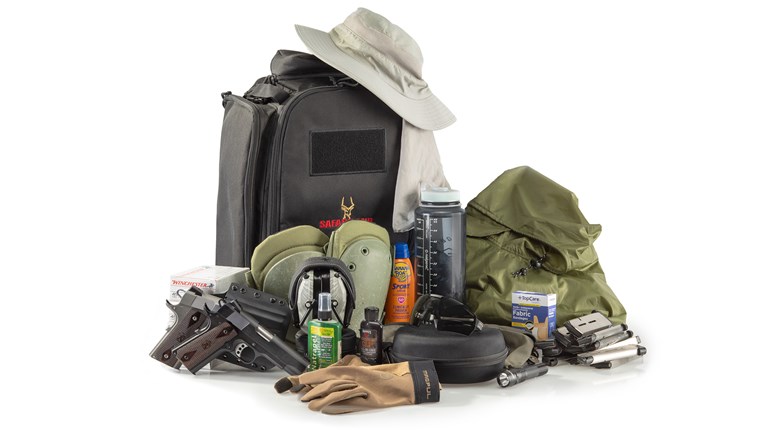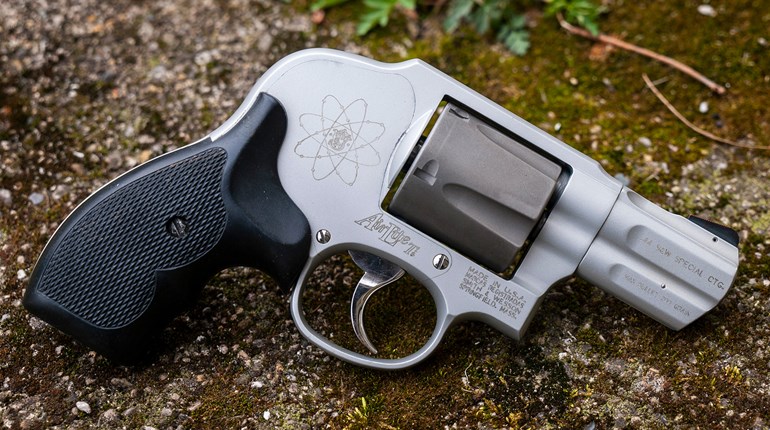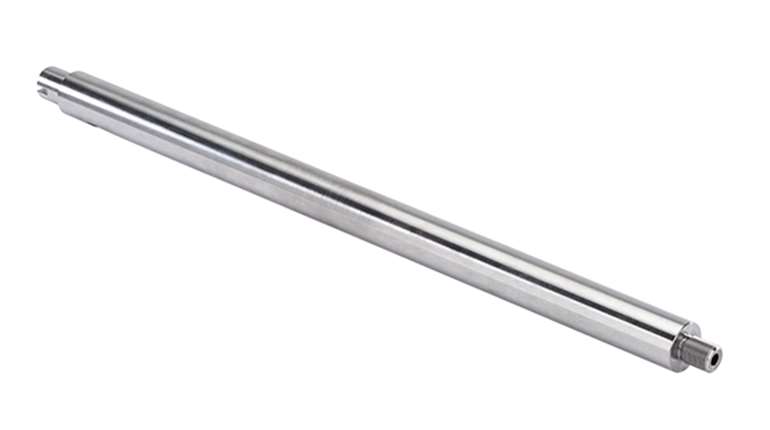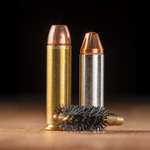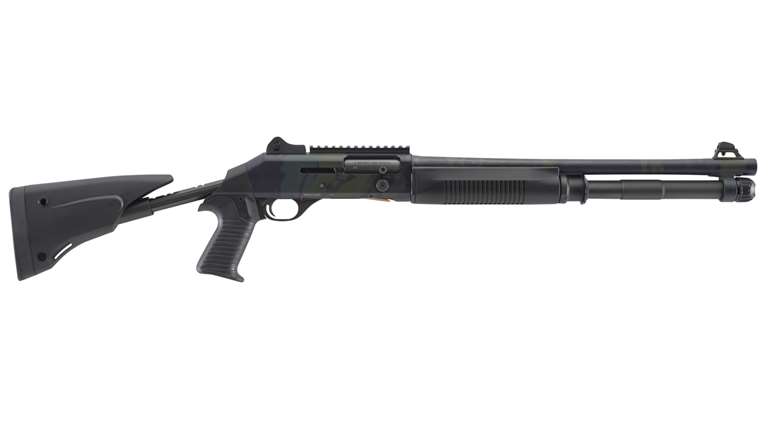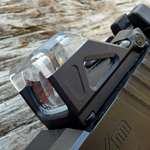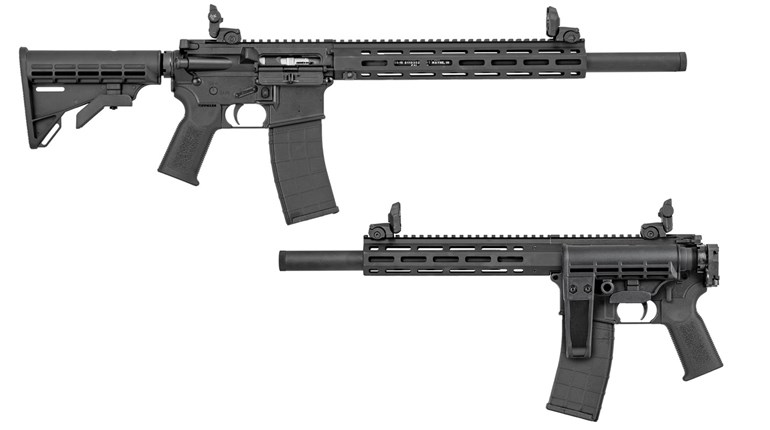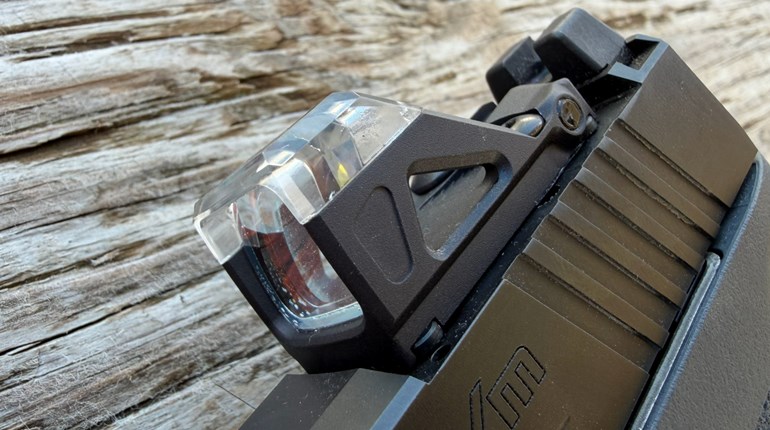** When you buy products through the links on our site, we may earn a commission that supports NRA's mission to protect, preserve and defend the Second Amendment. **
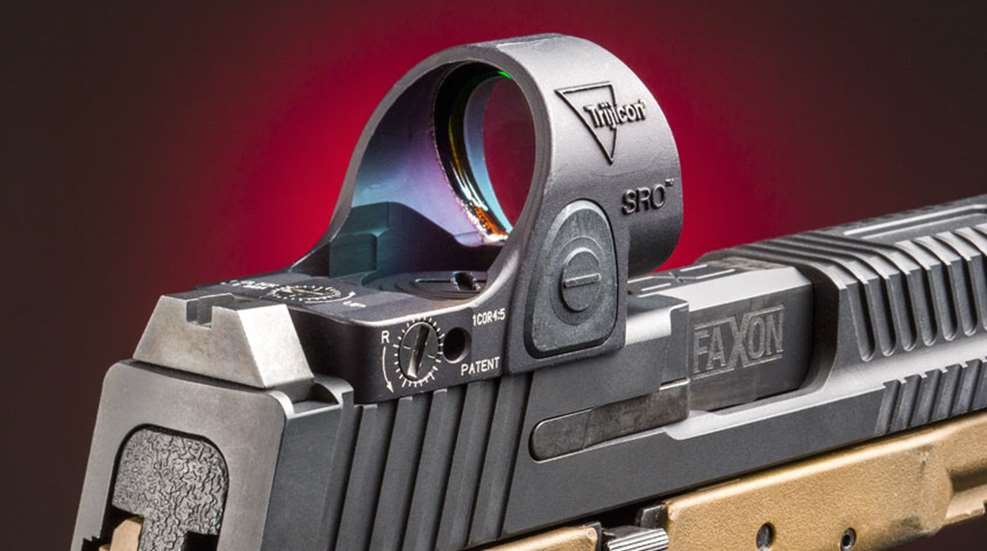
By their very nature, red-dot sights bring several inherent advantages to handguns. Recent examples like the Trijicon SRO are packed with user-friendly features.
While the slide-mounted, red-dot sight has been around for a lot longer than most shooters probably realize, it has only really begun developing into a mature technology over the last few years.
Almost every service-pistol line now offers a variant machined to accept slide-mounted optics, and even pocket 9 mms are now available with an optics cut. It’s becoming more common in law-enforcement use. Here in my home city of Indianapolis, my sources tell me that the next academy class will be given the option of being issued MOS-series Glocks, and the SWAT team already uses dots on its handguns.
The thing is, we’re still relatively early in this revolution, and trainers and end users are still out there experimenting and innovating. Dot-specific Tactics, Techniques and Procedures (TTPs) are evolving fast and remain in a state of flux. New benefits are being discovered and explored and incorporated into training curricula all the time.
The standard benefits touted for the red-dot sight are well known: The ability to shoot accurately yet maintain target focus, generally increased precision at longer distances and (most often cited) the fact that they’re usable by people whose vision just isn’t up to maintaining a hard front-sight focus anymore.
But talking to instructors over the last several months, I’ve learned of even more benefits to the dot that I hadn’t considered.
It’s becoming more common for manufacturers to combine new product unveilings with a class by a trainer to introduce gunwriters to the benefits of the product, and the launch of the Trijicon RMRcc was no exception. The optics manufacturer brought in Scott Jedlinski of Modern Samurai Project to give a clinic on MRDS-equipped pistols.
I’d taken a class with Jedlinski on my own just the previous July, so it was interesting to see what he’d incorporated into his presentation since then, and he brought up an important point that hadn’t been fully fleshed out only a year earlier.
Namely, the “target focus” allowed by the MRDS doesn’t constrain your field-of-vision the way a hard front-sight focus does. In a competition setting, this means that you can keep an entire target array in view. For instance, shooting a classic “El Presidente,” you’re looking at the whole array and simply shifting the dot from aiming point to aiming point, following the recoil like the bouncing ball in karaoke lyrics.
Even in closer to a target—say when firing a classic Failure Drill on a single target—the entire target is in your field-of-view and shooting the drill is just a matter of shifting the dot from high-center-chest to the head box. While this is great for paper targets and plate racks, it has big implications in the real world, too.
We’re in a day and age where the possibility of a lone concealed carrier finding themselves faced by multiple threats is not a far-fetched hypothetical. In a situation where the defender is outnumbered by aggressive, mobile assailants, anything that allows them to keep their head up and their awareness spread across as wide an area as possible would be a big help.
At Gunsite, while I was attending an event to introduce Bushnell’s newest pistol-mounted MRDS, I had a chance to talk to Erick Gelhaus, retired deputy, Gunsite instructor and developer of the school’s red-dot-specific variants of its popular 250 and 350 handgun curricula.
Gelhaus is an early adopter—he calls it “beta tester”—of the slide-mounted MRDS on duty guns, first experimenting with them around 2012. In putting together the Gunsite curriculum, he traveled around, getting training from a lot of the best names in the dot game, including Jedlinski and Aaron Cowan, and incorporating bits and pieces into his own class with full credit given where it was due.
He asked what I thought were the advantages of the red-dot sight, then listened patiently while I rattled off the canned answers about target focus, precision at distance and the like. He then told me that one of the biggest advantages would be in the aftermath of a defensive shooting.
We’re in a world that is going to require ever greater accountability on the part of a citizen using a firearm in self-defense. In the immediate aftermath, and possibly in criminal or civil proceedings following that, the good guy or gal will be grilled about their actions and the actions of their attacker that provoked the response.
With a target focus, as allowed by a red-dot sight, there’s much less of a chance you will miss something happening because you were intent on the front sight.
While it’s not like a hard front-sight focus completely robs you of your ability to perceive the target, it does become the center of attention, and this is something that non-shooters often don’t understand. Anything that allows the defender to stay more aware of the attacker’s actions so they can be better described in the aftermath is going to help the good guy better describe the unequivocal truth to investigators.
With more and more red-dot sights in the hands of concealed-carry licensees and law enforcement officers, and with more trainers working to discover their benefits, it will be enlightening to see where things are in another 4 or 5 years.
Almost every service-pistol line now offers a variant machined to accept slide-mounted optics, and even pocket 9 mms are now available with an optics cut. It’s becoming more common in law-enforcement use. Here in my home city of Indianapolis, my sources tell me that the next academy class will be given the option of being issued MOS-series Glocks, and the SWAT team already uses dots on its handguns.
The thing is, we’re still relatively early in this revolution, and trainers and end users are still out there experimenting and innovating. Dot-specific Tactics, Techniques and Procedures (TTPs) are evolving fast and remain in a state of flux. New benefits are being discovered and explored and incorporated into training curricula all the time.
The standard benefits touted for the red-dot sight are well known: The ability to shoot accurately yet maintain target focus, generally increased precision at longer distances and (most often cited) the fact that they’re usable by people whose vision just isn’t up to maintaining a hard front-sight focus anymore.
But talking to instructors over the last several months, I’ve learned of even more benefits to the dot that I hadn’t considered.
It’s becoming more common for manufacturers to combine new product unveilings with a class by a trainer to introduce gunwriters to the benefits of the product, and the launch of the Trijicon RMRcc was no exception. The optics manufacturer brought in Scott Jedlinski of Modern Samurai Project to give a clinic on MRDS-equipped pistols.
I’d taken a class with Jedlinski on my own just the previous July, so it was interesting to see what he’d incorporated into his presentation since then, and he brought up an important point that hadn’t been fully fleshed out only a year earlier.
Namely, the “target focus” allowed by the MRDS doesn’t constrain your field-of-vision the way a hard front-sight focus does. In a competition setting, this means that you can keep an entire target array in view. For instance, shooting a classic “El Presidente,” you’re looking at the whole array and simply shifting the dot from aiming point to aiming point, following the recoil like the bouncing ball in karaoke lyrics.
Even in closer to a target—say when firing a classic Failure Drill on a single target—the entire target is in your field-of-view and shooting the drill is just a matter of shifting the dot from high-center-chest to the head box. While this is great for paper targets and plate racks, it has big implications in the real world, too.
We’re in a day and age where the possibility of a lone concealed carrier finding themselves faced by multiple threats is not a far-fetched hypothetical. In a situation where the defender is outnumbered by aggressive, mobile assailants, anything that allows them to keep their head up and their awareness spread across as wide an area as possible would be a big help.
At Gunsite, while I was attending an event to introduce Bushnell’s newest pistol-mounted MRDS, I had a chance to talk to Erick Gelhaus, retired deputy, Gunsite instructor and developer of the school’s red-dot-specific variants of its popular 250 and 350 handgun curricula.
Gelhaus is an early adopter—he calls it “beta tester”—of the slide-mounted MRDS on duty guns, first experimenting with them around 2012. In putting together the Gunsite curriculum, he traveled around, getting training from a lot of the best names in the dot game, including Jedlinski and Aaron Cowan, and incorporating bits and pieces into his own class with full credit given where it was due.
He asked what I thought were the advantages of the red-dot sight, then listened patiently while I rattled off the canned answers about target focus, precision at distance and the like. He then told me that one of the biggest advantages would be in the aftermath of a defensive shooting.
We’re in a world that is going to require ever greater accountability on the part of a citizen using a firearm in self-defense. In the immediate aftermath, and possibly in criminal or civil proceedings following that, the good guy or gal will be grilled about their actions and the actions of their attacker that provoked the response.
With a target focus, as allowed by a red-dot sight, there’s much less of a chance you will miss something happening because you were intent on the front sight.
While it’s not like a hard front-sight focus completely robs you of your ability to perceive the target, it does become the center of attention, and this is something that non-shooters often don’t understand. Anything that allows the defender to stay more aware of the attacker’s actions so they can be better described in the aftermath is going to help the good guy better describe the unequivocal truth to investigators.
With more and more red-dot sights in the hands of concealed-carry licensees and law enforcement officers, and with more trainers working to discover their benefits, it will be enlightening to see where things are in another 4 or 5 years.












